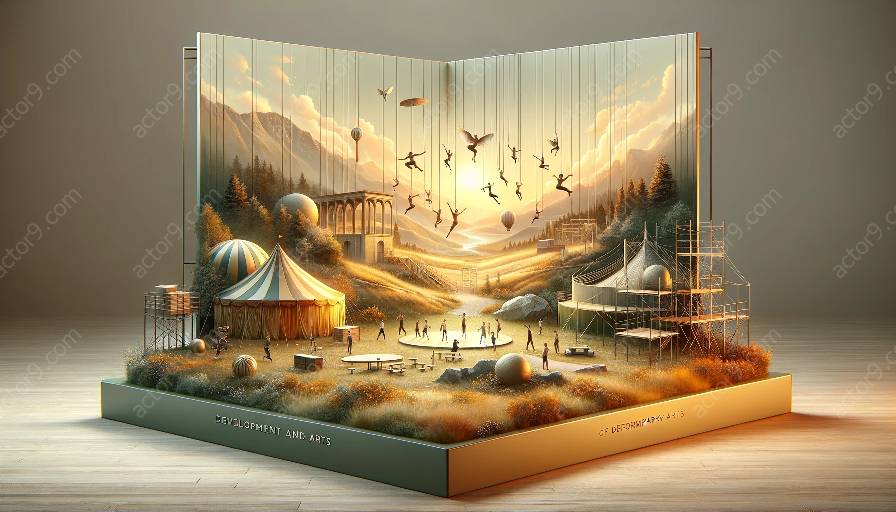In the dynamic world of circus arts, sustainability has become an increasingly important focus. This article explores the various sustainability practices applied in the circus arts industry, particularly in the development and training sector. We'll delve into eco-friendly approaches, innovative techniques, and their compatibility with the mind-boggling world of circus arts.
Sustainability in Circus Training and Development
Circus arts training and development have evolved to integrate sustainability practices. From eco-friendly materials used in equipment and costumes to the design of energy-efficient training spaces, the industry is embracing sustainable principles. Circus schools and organizations are incorporating sustainable practices into their training programs, ensuring that aspiring performers are equipped to make environmentally conscious choices.
Environmental Considerations in Performance Spaces
Circus arts performances often take place in various settings, including traditional circus tents and modern venues. Today, there is a growing emphasis on designing and constructing performance spaces that minimize environmental impact. This could involve using recycled materials for set design, optimizing energy use, and promoting eco-friendly commuting options for audiences and performers.
Circular Economy in Costume Design
In the realm of costume design for circus arts, the concept of a circular economy is gaining traction. Designers are exploring sustainable fabric choices, creating long-lasting costumes, and implementing recycling and upcycling practices. By promoting the circular economy, the industry is reducing waste and embracing a more environmentally responsible approach to costume creation.
Innovative Approaches to Sustainable Circus Practices
The circus arts industry is known for its innovation and creativity, and this extends to sustainability practices. From harnessing solar power for circus events and performances to creating biodiverse training spaces, circus professionals are at the forefront of adopting eco-friendly solutions. These innovative approaches not only contribute to environmental sustainability but also inspire audiences and fellow artists.
Community Engagement and Sustainability
Many circus arts organizations prioritize community involvement and social impact. This commitment often extends to sustainability initiatives, engaging local communities in eco-friendly practices and promoting awareness of environmental issues. Through educational outreach and partnerships with environmental organizations, circus arts professionals are fostering a culture of sustainability that goes beyond their performances.
Complementary Evolution of Circus Arts and Sustainability
The evolution of circus arts and sustainability practices are intertwined, each influencing the other. As circus arts continue to push boundaries and explore new artistic frontiers, sustainability becomes a natural partner in this evolution. The commitment to sustainable practices not only aligns with societal and environmental values but also enhances the creative and expressive potential of circus arts.
From training and development to performances and community engagement, sustainability practices in circus arts are shaping a more environmentally conscious and socially impactful industry. Embracing sustainable principles enriches the art form and ensures that circus arts remain a vibrant and relevant cultural expression in a rapidly changing world.


































